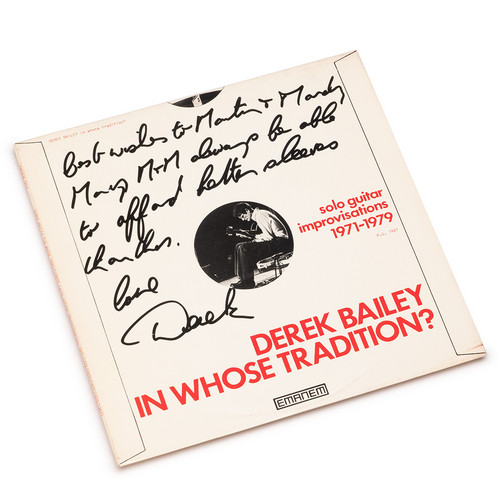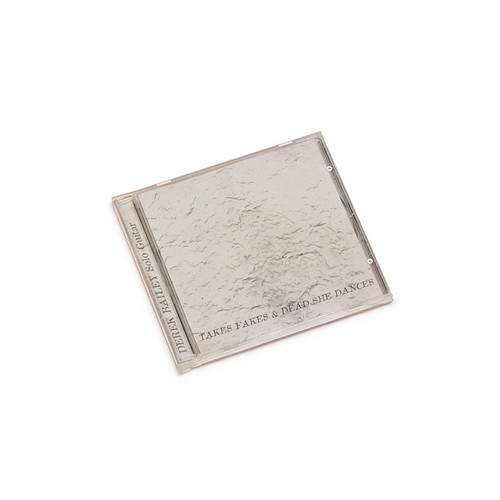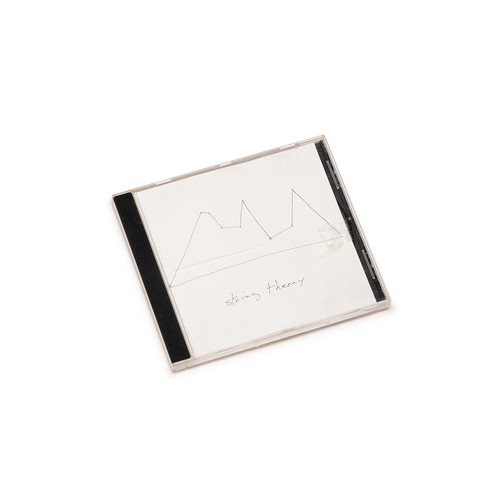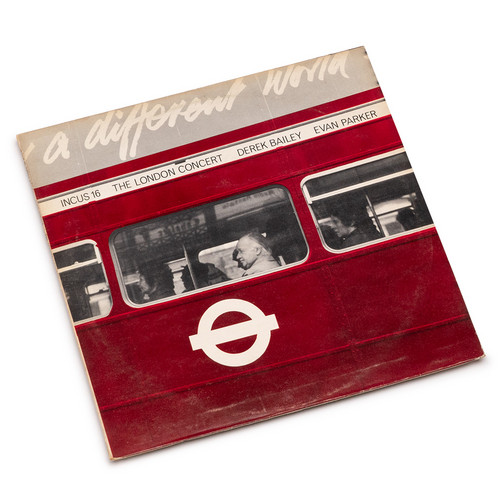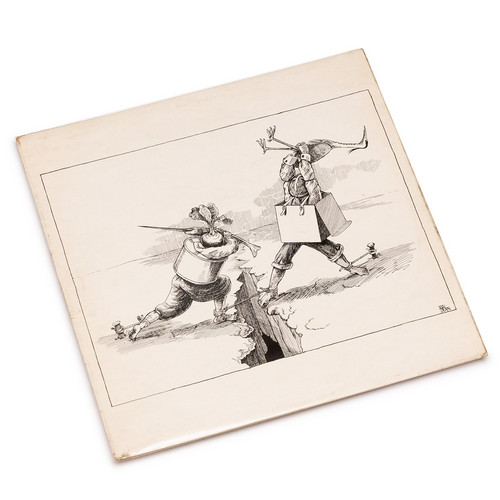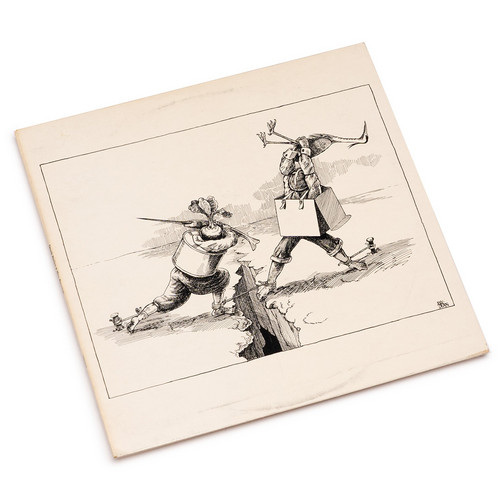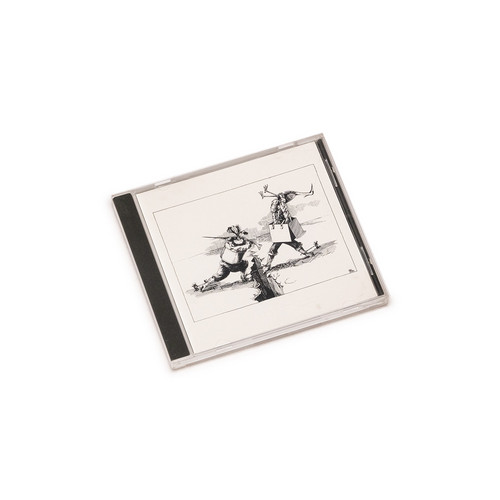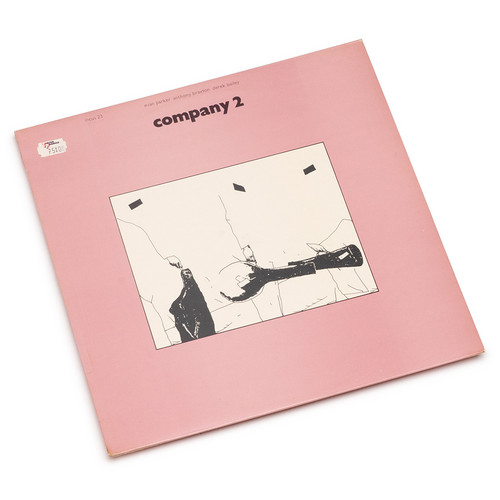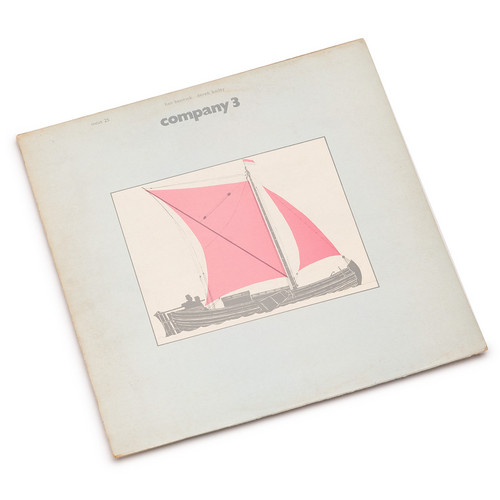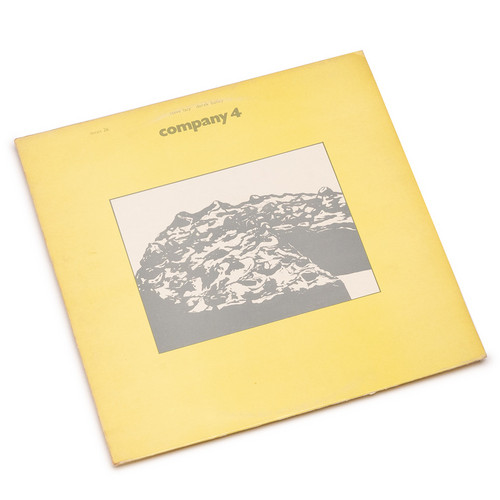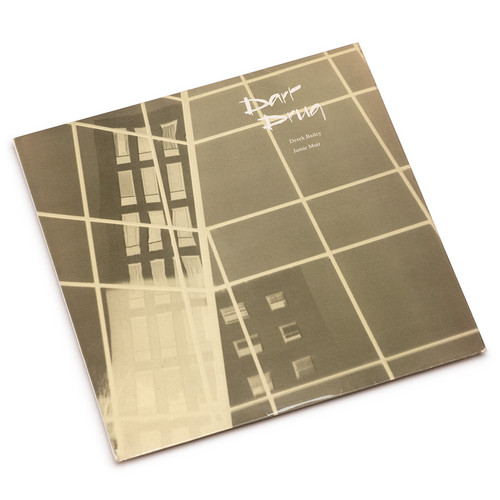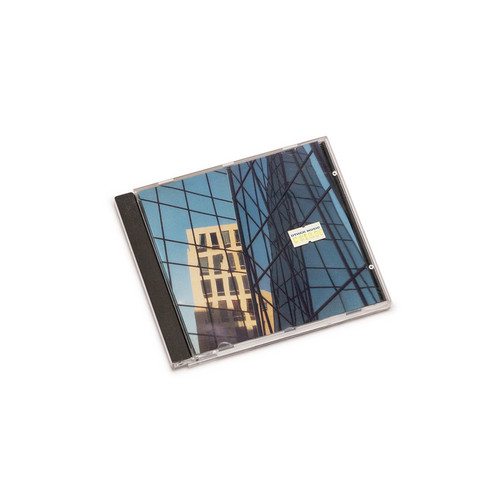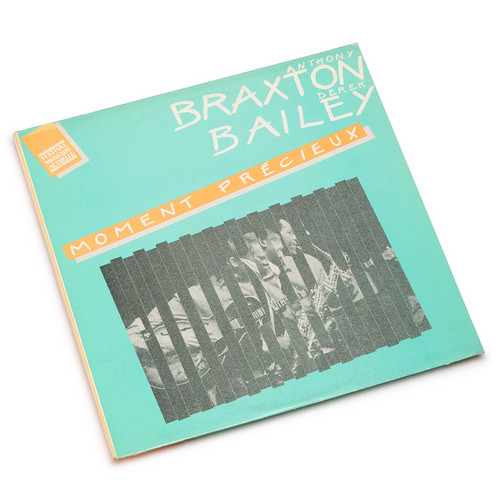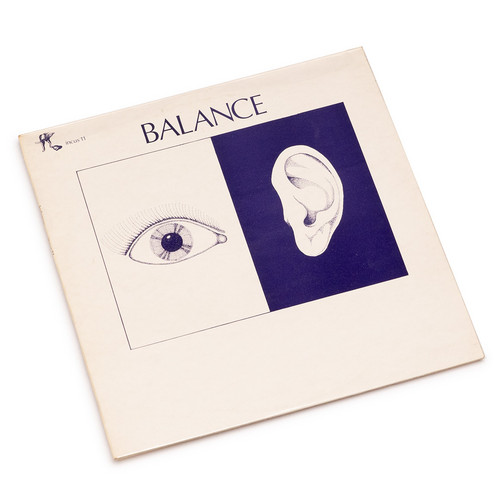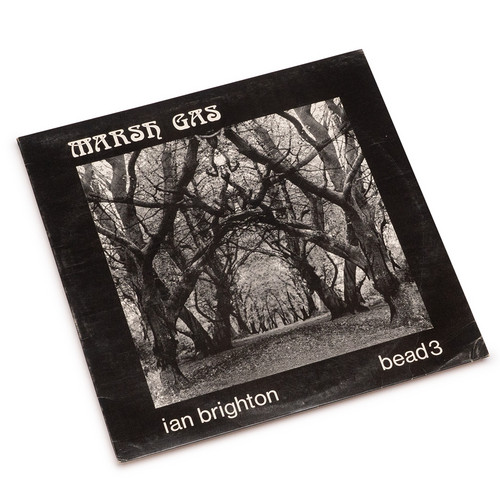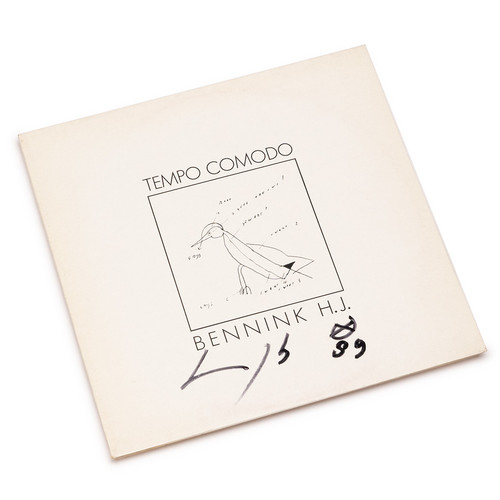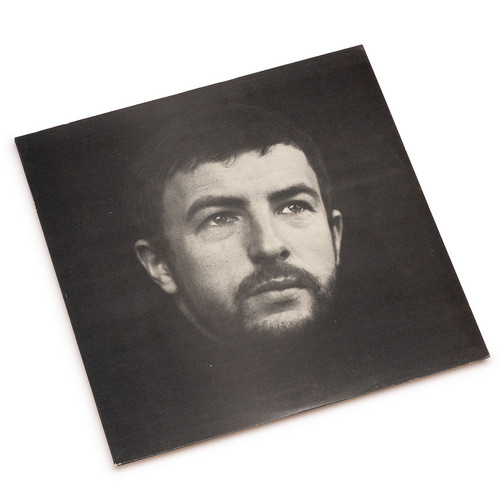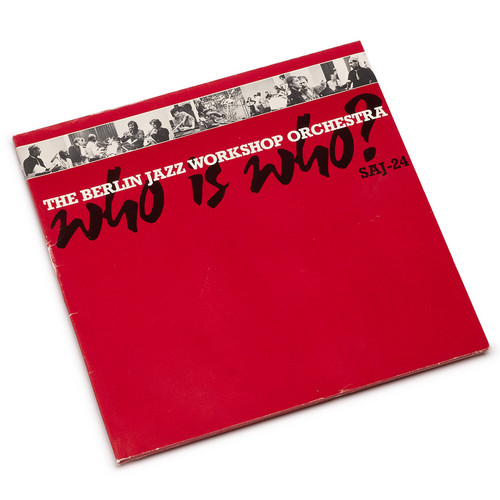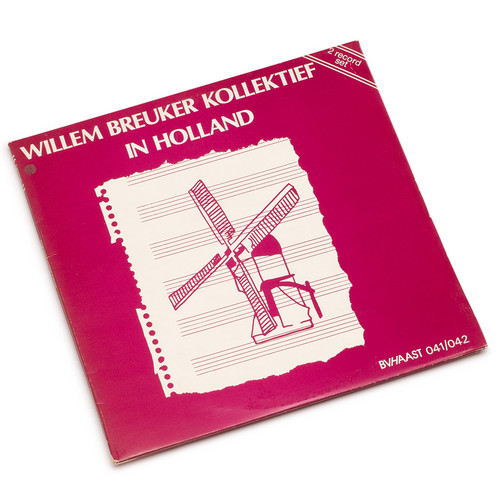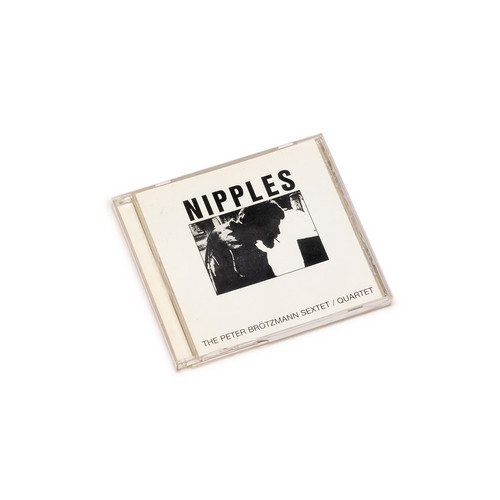Jazz /
In Whose Tradition? (LP)
Rare 1987 LP on Emanem with a wonderful selection of solo guitar improvisations recorded at various locations in London between 1971 and 1987.
Takes Fakes & Dead She Dances (CD)
Rare 1998 Incus gem of super raw solo guitar improvisations with purpose, released on CD only.
String Theory (CD)
Outstanding 2000 album on Paratactile of guitar feedback pieces, released on CD only.
The London Concert (LP)
Rare original 1975 edition on Incus of the first album of ground-breaking saxophone/guitar duets by the masters.
Selections From Live Performances At Verity's Place (LP)
Original first edition with black labels and laminated front sleeve of the 1972 LP on Incus, the second album by the guitar and percussion duo and an absolute free improvisation classic.
Selections From Live Performances At Verity's Place (LP)
Original first edition with black labels and matte sleeve of the 1972 LP on Incus, the second album by the guitar and percussion duo and an absolute free improvisation classic.
Selections From Live Performances At Verity's Place (CD)
1995 and only CD re-issue of the 1972 Incus LP, the second album by the guitar and percussion duo and an absolute free improvisation classic.
Company 2 (LP)
Original 1977 edition on Incus of the second Company album by the trio of illustrious improvisers, never re-issued on either LP or CD.
Company 3 (LP)
Original 1977 edition on Incus of the third Company album with duets by two giants of improvisation, never re-issued on either LP or CD.
Company 4 (LP)
Original 1977 edition on Incus of the fourth Company album with electric guitar / soprano saxophone duets by the unparalleled musicians, never re-issued on either LP or CD. Includes Incus catalogue.
Dart Drug (LP)
Rare original LP edition of the 1981 Incus album of fantastic guitar and percussion duets by the guitar master and former King Crimson amazing precussionist.
Dart Drug (CD)
Rare 1994 CD re-issue on Incus of the 1981 album of fantastic guitar and percussion duets by the guitar master and former King Crimson amazing precussionist.
Moment Précieux (LP)
Original 1987 LP on Les Disques Victo of electric guitar and soprano/alto saxophone duets by these amazing musicians recorded live at the 1986 Victoriaville Festival.
Balance (LP)
Rare Incus original edition from 1973 with white labels of the sole album by the Balance group composed of Ian Brighton, Frank Perry, Radu Malfatti and Philipp Wachsmann.
Marsh Gas (LP)
Original 1977 edition on Bead of the first Brighton album basically featuring the Balance group (with Radu Malfatti and Philipp Wachsmann) plus Marcio Mattos and Roger Smith, a narrative strange mix of improvisation and composition.
Tempo Comodo (signed LP)
Autographed copy of original 1982 great solo percussion LP on Data by one of the symbols of European improvisation.
From Now On (LP)
Rare 1967 original first album on ESP by German vibraphonist featuring Carlos Ward, Henry Grimes and Ed Blackwell. One of the most obscure ESP albums, never re-issued on either CD or LP.
Who Is Who? (LP)
The first 1979 LP on FMP with gatefold sleeve original innersleeve by the Orchestra featuring John Tchicai and a host of German musicians, never re-issued on either CD or LP.
In Holland (2LP)
Original 1981 double LP edition with gatefold sleeve on BVHaast of the Kollektief's finest album full of superb orchestrations.
Nipples (CD)
Rare first and only CD re-issue of the essential early manifesto of European improvisation, featuring Brötzmann, Han Bennink, Derek Bailey, Evan Parker, Fred Van Hove, Buschi Niebergall.
